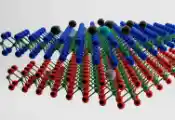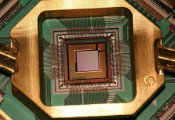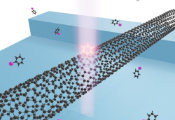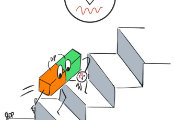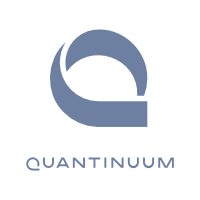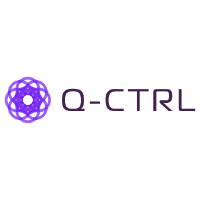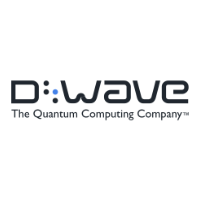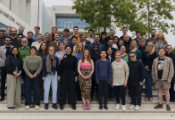BTQ Technologies and Macquarie University Publish Quantum Error Correction Method Using Shared Cavity
VANCOUVER, British Columbia, September 17, 2025 -- BTQ Technologies Corp., a global quantum technology company focused on securing mission-critical networks, is pleased to announce peer-reviewed research result with Macquarie University published in Physical Review Research.
The collaboration shows a practical way to perform quantum error correction on high-performing quantum low density parity check codes using a shared cavity to link qubits. The method avoids physically moving qubits and keeps the number of steps fixed, which makes systems easier to scale and operate. The results were presented on September 15, 2025 at CERN by BTQ’s Chief Quantum Officer, Dr. Gavin Brennen.
Why This Matters
- Simpler control: Many qubits can be checked in a constant number of steps which reduces complexity and speeds progress.
- Fewer failure points: No qubit shuttling or swapping means fewer opportunities for mistakes during operation.
- Built on equipment within reach today: The shared cavity approach targets performance levels that leading laboratories already pursue which shortens the path from paper to prototype.
- Aligned with leading hardware roadmaps: The team outlines a trilayer architecture that fits neutral atom platforms which are a promising route to large scale quantum systems.
The study demonstrates that some of the best performing quantum error correcting codes can be measured in a fault tolerant way by connecting qubits through a shared cavity mode. Recent advances in cavity mediated many body gates make this possible and remove the need to move qubits around. Simulations that include realistic noise sources show promising performance and suggest that this approach can be engineered with cooperativity ranges accessible to platforms like neutral atom quantum computers.
Gavin K. Brennen, Professor at Macquarie University and Chief Quantum Officer of BTQ Technologies, commented: “I am very happy with the outcome of our BTQ and Macquarie collaboration. Over the past decade there have been major advances in the development of better quantum error correction codes to make quantum computers work reliably, but implementing these on real quantum computers has remained a challenge. We show that the non local stabilizer checks in some of the highest performing qLDPC codes can be done in a fault tolerant way without moving qubits. By linking qubits through a shared cavity mode at performance levels within reach today we keep the circuit depth constant and simplify control. This gives a practical path to adopting these codes in platforms like neutral atom quantum computers.”
BTQ Technologies CEO Olivier Roussy Newton said: “Error correction is the bridge from lab experiments to reliable machines. This result turns a hard engineering challenge into a practical design choice by letting us check many qubits at once without moving them and with tools already available. For BTQ this shortens the path from research to working prototypes, lowers development risk and supports our roadmap in fault tolerant quantum processing applied to secure communications and cryptography. We plan to fold these methods into our platform work and hardware collaborations so we can deliver quantum secure products sooner with simpler control and stronger performance.”
These results support faster progress toward fault tolerant prototypes that can run longer and handle more complex algorithms. They provide a clearer path to applications in fault tolerant quantum processing for secure communications and advanced cryptography that align with BTQ product strategy.
The work uses hypergraph product and lifted product codes with nonlocal stabilizers. It relies on a deterministic cavity mediated many body gate to create and read nonlocal GHZ states and to measure stabilizers in constant depth. Circuit level noise simulations that include leakage and collective error show encouraging thresholds for hypergraph product codes and promising pseudothresholds for lifted product codes. The target hardware operates at cavity cooperativity in the range of roughly ten thousand to one million and uses a trilayer architecture that is compatible with neutral atom platforms.



